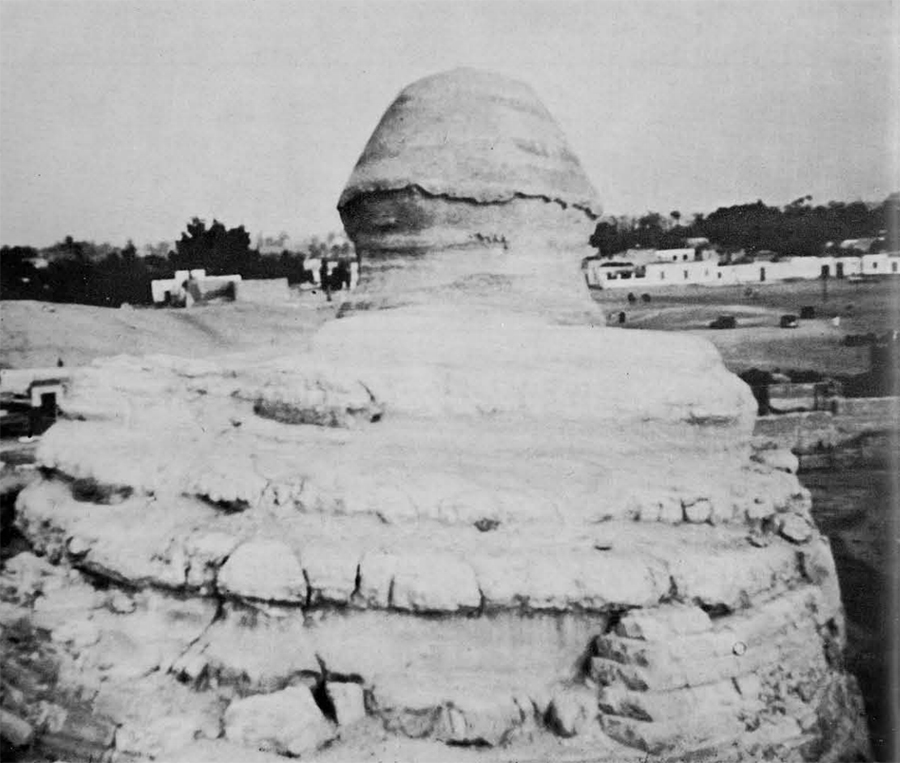
We thought and thought when we first saw the color slide from which this picture was made but couldn’t identify it. Can you? The answer is on page 39. The slide was made by Mr. Aubre Givier of Philadelphia to whom we are very grateful for permitting us to use it here.
The Authors
RODNEY S. YOUNG (“Gordion: Phrygian Construction and Architecture”), Curator of the Mediterranean Section of the University Museum since 1949, initiated the excavation of Gordion in 1950. Since that time he has divided his time between his duties in the Museum, teaching in the University of Pennsylvania, and the direction of the Gordion Expedition. In 1953, he headed a reconnaissance expedition for the Museum to Afghanistan. Between 1933 and 1949, Dr. Young was an Agora Fellow, later a Fuibright Fellow, at the American School of Classical Studies in Athens (except for an interlude for Government service during the war), where his particular interest was in the study and publication of Early Iron Age material. He has published numerous articles in his field in Hesperia and the American Journal of Archaeology.
J. ALDEN MASON (“Louis Shotridge”) was a member of the first undergraduate course in anthropology given at this University in 1904, and worked as photographer and assistant in the Museum in 1909-1910. He received his Ph.D. at the University of California in 1911. After seven years as Assistant Curator at the Field Museum of Natural History in Chicago and one year at the American Museum of Natural History in New York he was for thirty years Curator of the American Section in this Museum, retiring in 1955. He inaugurated the Museum expeditions to Piedras Negras in 1930 and brought out some of the finest examples of monumental Maya sculpture. In 1940 he led the expe-dition to Code, Panama, and brought back pre-Columbian gold ornaments. He has done research in archaeology, linguistics, ethnology, and folklore in Canada and many of the United States as well as in Mexico, Guatemala, Puerto Rico, Panama, and Colombia. His major popular publication is a Pelican book, Ancient Civilizations of Peru. In 1958 he was awarded the honorary degree of Litt.D by Franklin and Marshall College.
A. V. KIDDER (“Needed: More and Better Archaeologists”) has devoted his life to the archaeology of the Southwestern United States and the Maya of Central America. His pioneer work in the Southwest for Harvard was followed by many years of excavation at Pecos, New Mexico, for Philips Academy, Andover. In 1930 he became Chairman of the Division of Historical Research, Carnegie Institution of Washington. Until his retirement he directed the Carnegie’s archaeological program on the Maya in Yucatan, Guatemala, and Honduras. He has received many high academic honors, including the Lucy Wharton Drexel Medal presented by the University Museum in 1958. He is also a Fellow of the Museum.
ELLEN L. KOHLER (“An Etruscan Tomb Guardian”) received an M.A. in Latin from the University of Washington in 1942 and a Ph.D. in Classical Archaeology from Bryn Mawr College in 1958. She was a member of the Curium (Cyprus) Expedition of the University Museum in 1949 and has been with the Gordion Expedition in charge of field records since its beginning m 1950. She is now Assistant Curator of the Mediterranean Section and teaches Roman Archaeology in the University of Pennsylvania.
LINTON SATTERTHWAITE (“Maya ‘Long Count’ Numbers”), Curator of the American Section, came to the Museum in 1930 as field assistant to Dr. Mason, who was initiating work at Piedras Negras, Guatemala, and continued work there as Field Director, 1933-39. Subsequently he excavated Early Man sites in Wyoming (1940) and California (1944) but his principal interest has been in the ancient Maya civilization. The stelae and altars from Caracol now in the Middle American Hall result from Museum expeditions to British Honduras, of which he had charge (1950-53). These, with Stela 14 from Piedras Negras, brought out by Dr. Mason, constitute by far the largest collection of major Maya sculpture outside the countries of origin. He has visited Tikal each season since the Museum’s Tidal Project was initiated, studying the inscriptions of the stone monuments there (1956-59). Publications include reports and articles on field results, and a more theoretical monograph on Maya calendrics and astronomy, Concepts and Structures of Maya Calendrical Arithmetics.
Suggested Readings
GORDION: PHRYGIAN CONSTRUCTION AND ARCHITECTURE SETON LLOYD, Early Anatolia. Pelican Book A-354. London. 1956.
RODNEY S. YOUNG, In University Museum Bulletin, Gordion 1950 (Vol. 16, No. 1, March 1951), Progress at Gordion (Vol. 17, No. 4, December 1953) . Philadelphia. In Expedition, The Gordion Tomb (Vol. 1, No. 1, Fall 1958). Philadelphia.
LOUIS SHOTRIDGE In Archaeology, Making History at Gordion (Vol. 6, No. 3, Autumn 1953), Grave Robbers’ Leavings (Vol. 8, No. 3, Autumn 1955), Discoveries at Gordion 1956 (Vol. 9, No. 4, Winter 1956), Bronzes from Gordion’s Royal Tomb (Vol. 11, No. 4, December 1958). Columbia, Missouri.
PHILIP DRUCKER, Indians of the Northwest Coast. Handbook 10, American Museum of Natural History. New York. 1955.
ROBERT BRUCE INVERARITY, Art of the Northwest Coast Indians. Berkeley. 1950.
AUREL KRAUTS, The Tlingit Indians. American Ethnological Society. Seattle. 1956.
AN ETRUSCAN TOMB GUARDIAN P. J. Rus, An Introduction to Etruscan Art. Munksgaard. Copenhagen. 1953.
RAYMOND BLOTCH, The Etruscans. Praeger. New York. 1958.
GEORGE DENNIS, Cities and Cemeteries of Etruria. Murray. London. 1883.
MAYA “LONG COUNT” NUMBERS SILVANS G. MORLEY, The Ancient Maya (3rd edition, revised by George W. Brainerd). Stanford University Press. 1956.
J. ERIC S. THOMPSON, The Rise and Fall of Maya Civilization. University of Oklahoma Press. Norman. 1954.
Where in the World
The great Sphinx near Cairo, seen from the West. That central “mound” is really the back of the head.
